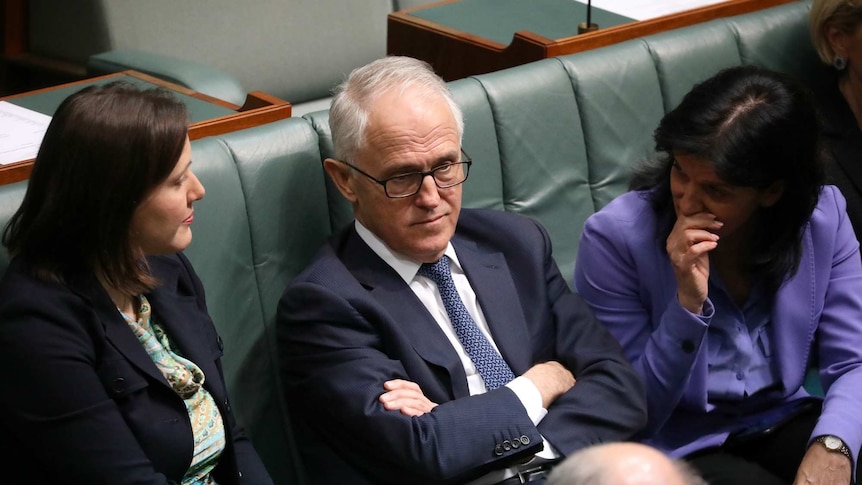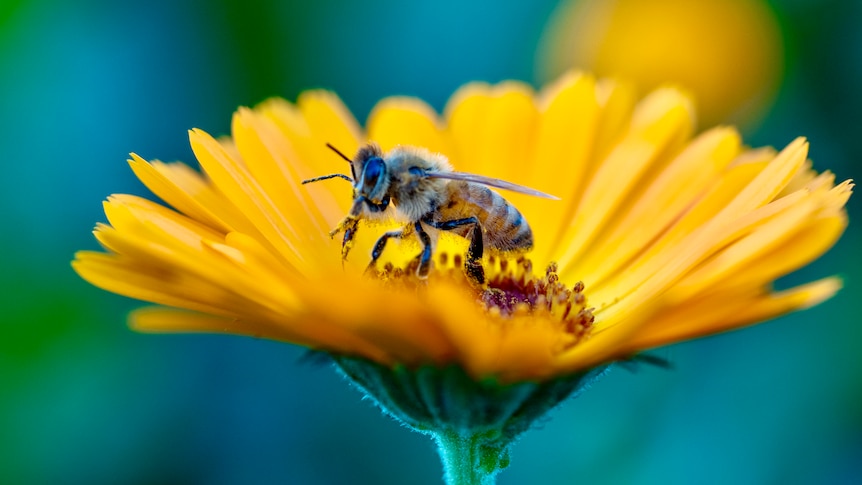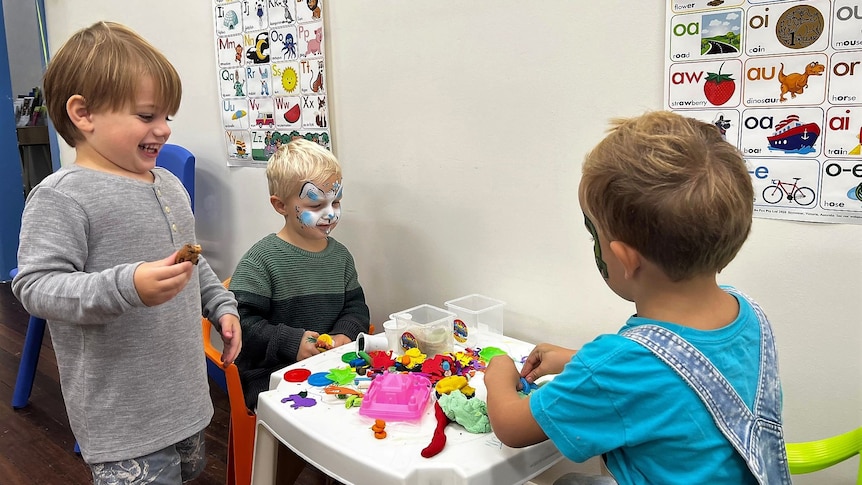Economics has helped to destroy the environment. Can it be used to save it?
By business reporter Gareth Hutchens
The Burnett Mary Regional Group in Queensland has completed Australia's first large-scale environmental audit.(ABC News: Patrick Heagney)
Australia is on the verge of having the world's first national accounting system that tracks the health of a country's natural environment, according to former Treasury secretary Ken Henry.
Key points:
Australia is on the verge of having the world's first national accounting system that tracks the health of a country's natural environment, according to former Treasury secretary Ken Henry.
Key points:
The Burnett Mary Regional Group in Queensland has completed Australia's first large-scale environmental audit
Dr Ken Henry says it could revolutionise the market system
It could lead to the world's first national environmental account
It may help to solve one of the most urgent problems facing humanity: how to reverse global environmental destruction.
"I think this is a game changer, I really do," he told the ABC.
"What we've done for the first time anywhere in the world at regional scale is to make an assessment, an audit if you like, of the environmental condition of the landscape.
"We've now demonstrated that it can be done ... and there is intense interest from financial markets people in seeing whether it's possible to commercialise this data, in the form of a biodiversity credit for example, and it looks like there is the possibility to do so."
Dr Henry said it will hopefully lead to future business profit-making also regenerating the planet.
"After all, almost all of human activity on earth rests one way or another upon the condition of the natural environment, and if we don't address the deterioration of the natural environment sometime pretty damn soon, the rest of it's going to come crashing down," he told the ABC.
So what is he talking about?
Ken Henry, former Treasury secretary, says the traditional business model of profit-maximisation that excludes environmental destruction from its calculations has done terrible damage to the planet(Source: John Gunn, ABC News)
One of Australia's systems of resource management
Australia is divided into 54 natural resource management regions (NRMs — see map below).
They are a mix of government and non-government organisations (NGOs) that deliver projects on the ground designed to improve the environment.
Many have been in existence since the mid-1990s and their origins can be traced to the landcare movement of the 1980s.
They've all been recognised as regional NRM organisations by the federal government as part of the Natural Heritage Trust and its successor programs including the National Landcare program.
Australia is divided into 54 natural resource management regions (NRMs — see map below).
They are a mix of government and non-government organisations (NGOs) that deliver projects on the ground designed to improve the environment.
Many have been in existence since the mid-1990s and their origins can be traced to the landcare movement of the 1980s.
They've all been recognised as regional NRM organisations by the federal government as part of the Natural Heritage Trust and its successor programs including the National Landcare program.
The Australian Government has been a major investor in natural resource management since the mid 1980s(Source: NRM Regions Australia website)
One of those NRMs is the Burnett Mary Regional Group (BMRG) in Queensland.
Its territory includes Bundaberg, the Burnett and Mary rivers, and the world heritage-listed K'Gari (formerly Fraser Island).
It is the NRM that has conducted the environmental audit Dr Henry is talking about.
One of those NRMs is the Burnett Mary Regional Group (BMRG) in Queensland.
Its territory includes Bundaberg, the Burnett and Mary rivers, and the world heritage-listed K'Gari (formerly Fraser Island).
It is the NRM that has conducted the environmental audit Dr Henry is talking about.
It has employed scientists to take a stocktake of the natural assets within its borders, including its plants and animals, its vegetation cover, its soil condition (including CO2 stores) and the health of its rivers and waterways, over 56,000 square kilometres.
To collect the data, the scientists used eDNA metabarcoding, portable water sensor smart-stations, satellite remote sensing and Bayesian modelling, and their methods were complemented by consultations with traditional owners.
Sheila Charlesworth, BMRG's chief executive, said it took over 18 months to compile the "environmental account", but it took years of work beforehand to perfect the methodology.
And she's excited about the next step.
"Now we can actually quantify and measure, on an annual basis, the difference that we're making [to the environment]," she said.
"It's not just for BMRG, it's for all NRM groups across Australia."
She said at the NRM national conference in Western Australia earlier this month, other NRMs made a commitment to take their own environmental stocktakes using the same methodology.
"We're currently working on the rollout of the road map for training across Australia," she said.
L to R: Tom Espinoza, director of research at BMRG, Brendan Fletcher, land and sea ranger at Gidarjil Development Corporation, Sheila Charlesworth, chief executive of BMRG, Brent Mclellan, operations manager at Gidarjil Development Corporation, Ben Hoekstra, project officer at BMRG
(ABC News: Patrick Heagney)
So what exactly does the environmental account do?
Dr Henry said the environmental account in the BMRG was important for one key reason.
He said it created a baseline dataset of the environment in that region, and that will allow scientists to track changes in the health of the environment over time — to see if it's degrading or improving.
He said that will lay the foundation for the creation of new markets that will attach a financial value to the improvement in environmental conditions.
And that means businesses will be incentivised to start pouring vast sums of money into projects that improve the environment because it will be the profitable thing to do.
He said the new markets will hopefully spread across the country as other NRMs take stocktakes of their own natural assets and "environmental accounting" goes mainstream.
YOUTUBE
He said it created a baseline dataset of the environment in that region, and that will allow scientists to track changes in the health of the environment over time — to see if it's degrading or improving.
He said that will lay the foundation for the creation of new markets that will attach a financial value to the improvement in environmental conditions.
And that means businesses will be incentivised to start pouring vast sums of money into projects that improve the environment because it will be the profitable thing to do.
He said the new markets will hopefully spread across the country as other NRMs take stocktakes of their own natural assets and "environmental accounting" goes mainstream.
YOUTUBE
Why nature is the next big asset class
Dr Henry said this concept was a personal passion.
He's now a director of a company called Accounting for Nature (AfN) that has developed the methodology and scientifically-based framework for the environmental accounting that has been used in the Queensland pilot.
Other AfN board members include Peter Harper, the former Deputy Australian Statistician at the Australian Bureau of Statistics who was responsible for the ABS's environmental statistics program, and chair Peter Cosier, the renowned conservationist and co-founder of the Wentworth Group of Concerned Scientists.
He said AfN was only established a few years ago, but the history of the company stretched back much further to his time in Treasury when he was having conversations with people like Peter Cosier.
"It's really his brainchild," he said of Mr Cosier.
Dr Henry said when he was Treasury secretary (between 2001 and 2011) he could see how policymakers were trying to make decisions affecting the wellbeing of millions of Australians, but those decisions were based on data about the environment that had huge information gaps.
"It struck me that the information available to us in the environmental area was particularly bad, particularly lacking in breadth and depth," he said.
"When you consider the State of the Environment reports that are published every five years ... you [see] the paucity of data the authors of those reports rely upon.
"The reports are incredibly well written, very high quality, but the data limitations are just absolutely staggering. And you know, report after report, the authors refer to data limitations, saying, 'If only we had better data'."
He said before AfN existed he'd taken the idea of environmental accounting to Malcolm Turnbull to see if he was interested in backing it.
How Turnbull's leadership came crashing down

Malcolm Turnbull is no longer the Prime Minister, after a leadership challenge that became uglier by the minute over the space of four days. Here's how it unfolded.
"It struck me that the information available to us in the environmental area was particularly bad, particularly lacking in breadth and depth," he said.
"When you consider the State of the Environment reports that are published every five years ... you [see] the paucity of data the authors of those reports rely upon.
"The reports are incredibly well written, very high quality, but the data limitations are just absolutely staggering. And you know, report after report, the authors refer to data limitations, saying, 'If only we had better data'."
He said before AfN existed he'd taken the idea of environmental accounting to Malcolm Turnbull to see if he was interested in backing it.
How Turnbull's leadership came crashing down
Malcolm Turnbull is no longer the Prime Minister, after a leadership challenge that became uglier by the minute over the space of four days. Here's how it unfolded.
"A group of us, four of us, had a meeting with Malcolm Turnbull when he was prime minister, in his office in Sydney, and we took him through the methods and standards, the approach ... and we said the Australian government could roll this out around Australia, through the NRMs, one NRM at a time, and you would have, prime minister, the world's first national environmental account.
"And he said, 'I love it. We're going to do it.' But a few weeks later he lost his job."
Mr Turnbull lost the prime ministership in August 2018 when he was rolled by his partyroom and replaced by Scott Morrison as leader.
Dr Henry said after years of frustration and seeing "very little progress" at the national level in Australia on the production of a national environmental account, he and others had decided it was time to do something different.
"The Queensland government got in touch with some of us and said, 'We're aware that you have some intellectual property here, you know how to do this, we want to roll out our land restoration fund, and we need some really good indicators of environmental outcomes to back our scheme so it's a scheme that's credible and has high integrity'," he said.
"They encouraged us to set up this not-for-profit entity called Accounting for Nature, which we did about four years ago."
"And he said, 'I love it. We're going to do it.' But a few weeks later he lost his job."
Mr Turnbull lost the prime ministership in August 2018 when he was rolled by his partyroom and replaced by Scott Morrison as leader.
Dr Henry said after years of frustration and seeing "very little progress" at the national level in Australia on the production of a national environmental account, he and others had decided it was time to do something different.
"The Queensland government got in touch with some of us and said, 'We're aware that you have some intellectual property here, you know how to do this, we want to roll out our land restoration fund, and we need some really good indicators of environmental outcomes to back our scheme so it's a scheme that's credible and has high integrity'," he said.
"They encouraged us to set up this not-for-profit entity called Accounting for Nature, which we did about four years ago."
How will the new financial products work?
Martijn Wilder is the founder and chief executive of Pollination Group, a climate change investment and advisory firm.
He's taking the news of BMRG's environmental account to financial markets to explain to them what's happening in Australia.
He said the development of environmental improvement as an asset class was still in its early stages, but the benefits of the concept were obvious.
As an example, think of sustainability-linked loans.
Martijn Wilder, the founder and chief executive of Pollination Group(ABC News: John Gunn)
That's a type of loan from a bank that incentivises businesses to invest money in the environment around them, to promote sustainability and protect the natural biodiversity of the local area, by offering cheaper interest rates for businesses that invest in local projects.
That type of product makes sense from a bank's perspective because it means the businesses it lends to will have a better chance of remaining profitable in the long-run, and it makes sense from an insurance company's perspective if it reduces the "nature risk" and "climate risk" facing businesses across the country.
Pollution 'reduces butterflies, bees pollinating flowers'

A study of the effects of common air pollutants at levels below national guidelines has found their presence significantly reduces the rate of pollination for bees and butterflies.
That's a type of loan from a bank that incentivises businesses to invest money in the environment around them, to promote sustainability and protect the natural biodiversity of the local area, by offering cheaper interest rates for businesses that invest in local projects.
That type of product makes sense from a bank's perspective because it means the businesses it lends to will have a better chance of remaining profitable in the long-run, and it makes sense from an insurance company's perspective if it reduces the "nature risk" and "climate risk" facing businesses across the country.
Pollution 'reduces butterflies, bees pollinating flowers'
A study of the effects of common air pollutants at levels below national guidelines has found their presence significantly reduces the rate of pollination for bees and butterflies.
According to Mr Wilder, the BMRG's environmental account is significant because it will clearly show, with demonstrable results, if the environmental health of the region is improving over time. And if the environment is becoming healthier, it will increase the value of the region's natural assets.
He said there was "no clear precedent" for this type of thing and people were still trying to figure out how to value environmental assets as an asset class.
But it essentially came down to one thing: accepting that all human and economic activity relies on the natural environment, so the environment must be protected.
"We're seeing globally a movement towards the importance of trying to protect nature, but the challenge has been how to actually get capital to invest in that," he told the ABC.
"Some of the work we've been doing ... is looking at how do you actually invest in those more traditional activities that interact with nature, like farming, forestry, and do them in a more sustainable, regenerative way, that not only protects nature but also increases the productivity of the land.
"Over time, we're hoping that it will be possible to invest in biodiversity, to invest in wildlife and other aspects of nature, that will produce an economic return."
Who has backed the project?
The pilot in Queensland had some financial backing from Andrew and Nicola Forrest's Minderoo Foundation.
Adrian Turner, who leads the foundation's Fire and Flood Resilience initiative, said the foundation invested millions in the project.
He said the foundation wanted to see a common way of measuring the condition of the environment that took into account how resilient different landscapes were to fire and floods.
"We think what will emerge is multiple classes of credit for investment vehicles, with the ones that take into account fire and flood resilience being valued highest," he told the ABC.
He said there was "no clear precedent" for this type of thing and people were still trying to figure out how to value environmental assets as an asset class.
But it essentially came down to one thing: accepting that all human and economic activity relies on the natural environment, so the environment must be protected.
"We're seeing globally a movement towards the importance of trying to protect nature, but the challenge has been how to actually get capital to invest in that," he told the ABC.
"Some of the work we've been doing ... is looking at how do you actually invest in those more traditional activities that interact with nature, like farming, forestry, and do them in a more sustainable, regenerative way, that not only protects nature but also increases the productivity of the land.
"Over time, we're hoping that it will be possible to invest in biodiversity, to invest in wildlife and other aspects of nature, that will produce an economic return."
Who has backed the project?
The pilot in Queensland had some financial backing from Andrew and Nicola Forrest's Minderoo Foundation.
Adrian Turner, who leads the foundation's Fire and Flood Resilience initiative, said the foundation invested millions in the project.
He said the foundation wanted to see a common way of measuring the condition of the environment that took into account how resilient different landscapes were to fire and floods.
"We think what will emerge is multiple classes of credit for investment vehicles, with the ones that take into account fire and flood resilience being valued highest," he told the ABC.
Adrian Turner leads the Minderoo Foundation's Fire and Flood Resilience initiative(ABC News: John Gunn)
"We're familiar with carbon credit schemes, but if we take that as an example, then a carbon offset or a carbon credit that's not taking into account the risk of fire and flood has to be worth less in our view, like if a fire roars through a landscape that's been regenerated, then effectively we're back to square one and having to start again."
Mr Turner said the Minderoo Foundation really wanted this environmental accounting approach to be scaled nationally and internationally.
"So we have a set of national natural capital accounts that can be used to inform private sector investment, government investment, and also to give us a consistent way to measure the impact over time of our actions as a society on biodiversity and the environment more broadly," he said.
"We're familiar with carbon credit schemes, but if we take that as an example, then a carbon offset or a carbon credit that's not taking into account the risk of fire and flood has to be worth less in our view, like if a fire roars through a landscape that's been regenerated, then effectively we're back to square one and having to start again."
Mr Turner said the Minderoo Foundation really wanted this environmental accounting approach to be scaled nationally and internationally.
"So we have a set of national natural capital accounts that can be used to inform private sector investment, government investment, and also to give us a consistent way to measure the impact over time of our actions as a society on biodiversity and the environment more broadly," he said.
When will companies become 'nature positive'?
Dr Adrian Ward, the chief executive of AfN, said the world was familiar with the concept of "climate risk".
But these new environmental accounts should help people think about "nature risk" too.
He said businesses will eventually have to expand their ambitions from being "net zero" to being "nature positive," which is a situation in which profitable companies are profitable precisely because they're having a net positive impact on the environment.
"Many farmers in Australia and worldwide have been doing incredible conservation and land restoration efforts for a long time, but they've never had a framework that shows the improvement in nature [that's occurred from their efforts]," he said.
Dr Adrian Ward, the chief executive of Accounting for Nature(ABC News: Steve Keen)
"So what we really hope is, and it's very early days, as we go into the future new markets will emerge ... that will pay farmers for the improvements they're making across the landscape."
He said AfN will be able to provide third-party audit certification for the environmental accounts of other NRMs to maintain the integrity of the data.
"Accounting for Nature was very much born to bring integrity to new environmental markets, and we'll do that through very strong and stringent governance and certification standards, which includes third-party audits," he said.
"All of the methods that are used to produce the environmental accounts ... are accredited by the group's science accreditation committee which includes some very well known scientists in the Australian community," he said.
Using the market system to save the environment (and capitalism)
Dr Henry said the world had come a long way in recent decades, because concern for the environment was no longer confined to people living on the "fringe" of society.
He said everyone was realising that the old business model of profit-maximisation that excluded environmental destruction from its calculations was an appalling failure.
"So what we really hope is, and it's very early days, as we go into the future new markets will emerge ... that will pay farmers for the improvements they're making across the landscape."
He said AfN will be able to provide third-party audit certification for the environmental accounts of other NRMs to maintain the integrity of the data.
"Accounting for Nature was very much born to bring integrity to new environmental markets, and we'll do that through very strong and stringent governance and certification standards, which includes third-party audits," he said.
"All of the methods that are used to produce the environmental accounts ... are accredited by the group's science accreditation committee which includes some very well known scientists in the Australian community," he said.
Using the market system to save the environment (and capitalism)
Dr Henry said the world had come a long way in recent decades, because concern for the environment was no longer confined to people living on the "fringe" of society.
He said everyone was realising that the old business model of profit-maximisation that excluded environmental destruction from its calculations was an appalling failure.
This is how to calculate GDP

The history of the GDP measurement is fascinating, but the number has its problems.
GDP is about money, not people

The history of the GDP measurement is fascinating, but the number has its problems.
GDP is about money, not people
GDP measures economic output. But it's not the only measure of national wellbeing - and may not be the best.
"We've now got shareholders, they're the beneficiaries of the profits, but they're saying, 'Hang on, this is not right'," he said.
"We've got workers saying, 'Why the hell would I want to work for you, given the damage that you're inflicting on the natural environment?'
"We've got consumers saying, 'Why would I buy your products, given the damage you've been inflicting on the natural environment?'
"All of these — the shareholders, the workers, and the consumers — they are putting at risk the viability of that business [model], and so the businesses themselves are now reacting and they're saying, 'Okay, in order to save ourselves, we have to address the negative externalities that we're generating.'
"So, this is business saving itself from itself," he told the ABC.
"We've got workers saying, 'Why the hell would I want to work for you, given the damage that you're inflicting on the natural environment?'
"We've got consumers saying, 'Why would I buy your products, given the damage you've been inflicting on the natural environment?'
"All of these — the shareholders, the workers, and the consumers — they are putting at risk the viability of that business [model], and so the businesses themselves are now reacting and they're saying, 'Okay, in order to save ourselves, we have to address the negative externalities that we're generating.'
"So, this is business saving itself from itself," he told the ABC.
Dr Ken Henry says governments have been "absolutely hopeless" at protecting the environment(ABC News: Joanne Shoebridge)









